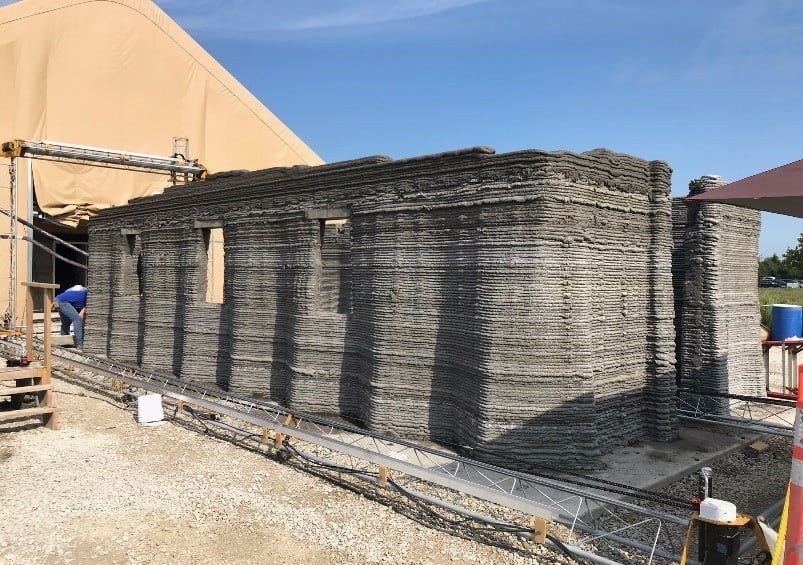The Marines are the first to fight, and the first to establish an innovation-focused unit connected to experts in cyber, automation, contested logistics, machine learning and more ― in New York.
The Corps has established its Marine Innovation Unit and its headquarters in Newburgh, New York. That’s an effort to tap directly into the technology, entrepreneurship and tech-enabled colleges, universities and people in the Empire State.
“Right now, there is no service-level innovation command that has a presence in the state of New York,” said Col. Matthew Swindle, MIU commanding officer and reservist, told Marine Corps Times. “The Marine Corps would be the first.”
That headquarters is being set up in Newburgh, New York, home of 4th Marine Aircraft Wing’s VMGR 452, a KC-130T/KC-130J squadron out of Stewart Air National Guard Base.
It’s not an idea coming out of nowhere.
For close to a decade now, the Corps has been straining to see where it can get experts in those high-tech fields mentioned above.
Turns out, it has quite a few in its own ranks, but most of them are in the Marine Corps Reserve.
Laid out both in the 2021 Marine Corps Reserve Campaign Plan and the May annual update to Marine Corps Force Design 2030, the MIU was created to find Marines with those skills and connect the Corps to groups and areas where it’s been kind of left out when compared to other services.
Those include collaborations with industry, academia, special operations program managers, Army Futures Command, federally funded research centers that work on military problems and more.
Both reports noted that MIU will partner with Marine Corps Warfighting Lab to identify problems, gaps, critical solutions needed by the service.

The MIU gives the reserves access to non-military skills and a talent pool already in uniform, Lt. Gen. David Bellon, commander of Marine Corps Forces Reserve, told Marine Corps Times in a May interview.
And some pretty cool seats at the table for all things new in the Corps.
“Marine reservists are involved in some of the higher end, most classified programs we have and they’re leading because of their backgrounds,” Bellon said. “You have a constellation of threats that are out there moving, that requires cutting edge, total domain awareness.”
And that’s almost a full-time job itself.
Swindle noted that the Corps needed a piece focused on finding fixes that can be put in the field in a few months, not years, to meet the constantly evolving hazards facing the operational forces.
Swindle said that they advertised the unit’s initial 100 open slots across all parts of the Reserves. That included those currently serving, uniformed reservists to those on active duty but looking to make the switch and even to the Individual Ready Reserve, or the limbo status Marines face when they leave active duty but haven’t completed their service obligation yet.
“The output was dramatic,” Swindle said. “In the first week alone, we had 300 applications for 100 open slots.”
Since that January posting, he has received nearly 975 applications.
MIU will hit 125 total members, all reservists, by the end of September, he said. When Oct. 1 and the new fiscal year arrives, another 140 slots should open, depending on budget numbers.
The current plan calls for a total of 380 billets for MIU by the end of fiscal year 2024.
Marines might be motivated, but to work independently, most often remotely, on these difficult problems they need to apply with measurable expertise in one of the following areas: artificial intelligence, data science, human systems, advanced manufacturing, quantum computing, autonomy/robotics, space, supply chain management, cyber, synthetic biology, energy and materials science or other tech fields.

Swindle worked from 2018–2021 at the Defense Innovation Unit, which connected Silicon Valley with the Pentagon.
“All of the good ideas were coming out of the Marine Corps because of the critical thinking from Force Design 2030,” Swindle said.
The colonel pointed to two unclassified projects as examples of the innovation work that unit did he wants to build on with MIU – kickstarting a U.S.-based Group I drone manufacturing base and a barracks 3D printing experiment that gave Marines a ready-made solution for safe housing in austere locations.
The drone project was an answer to the Chinese-government dominated Group I drone stranglehold that gave planners worries about the security and supply of those platforms. The “Blue small Unmanned Aerial Systems” project got the homeland-based Group I drone building off the ground.
The 3D printed barracks might have prompted some Marine-worthy memes and looked like a cool science fair project to the uninitiated. But that is until the behind-the-scenes numbers are revealed.
Swindle noted that a typical fortified barracks built in Iraq or Afghanistan would require shipping in construction materials and consume three weeks’ worth of a platoon’s time.
That’s three weeks not pulling security, not conducting ambushes or raids, not meeting with the local population.
Instead, with 3D printing and some planning, an entire barracks can be built in 24 hours.
And that 3D printed structure has better ballistics protection than the plywood shacks and sandbags that have become many a Marine’s friend over the past two decades, he said.
Todd South has written about crime, courts, government and the military for multiple publications since 2004 and was named a 2014 Pulitzer finalist for a co-written project on witness intimidation. Todd is a Marine veteran of the Iraq War.









